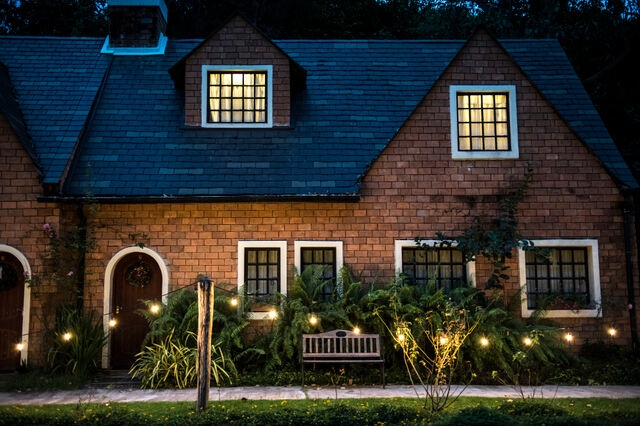
Utilizing outdoor lighting for your home brings many benefits. It adds functionality, safety, and an inviting appearance in the setting of early Colorado winter and fall sunsets. However, starting an outdoor lighting installation project requires some important information and understanding of essential points. We discuss them below:
Examine Your Outdoor Space Utilization
Consider how you actually utilize your patio or yard before you start designing or installing it. Are you illuminating the route from the garage to the rear entrance? Do you want to give the fire pit a warm atmosphere for late-night gatherings? Or perhaps you want to draw attention to that lovely spruce in the front yard.
By being clear about your objectives, you can prevent squandering money on the wrong fixtures or placing lights where they aren’t truly needed.
Understand the Denver Climate Factor
The weather conditions in Denver frequently create challenges for outdoor structures. The outdoor lighting systems in your vicinity should maintain their integrity during all seasons, including sunshine, snowfall, heat, and precipitation. Choose outdoor-rated weather-resistant components that specifically perform well in cold winter conditions to protect your investment.
LED lights stand out because they deliver long service duration with minimal energy usage and maintain their performance throughout Colorado’s weather variations. Solar energy lighting depends heavily on daytime exposure to sunlight for charging purposes, so ensure your yard receives enough daylight throughout winter.
Prioritize Functionality and Safety
Outdoor lighting brings charm to your space, but functional needs must remain a priority. Your goal should be to install sufficient illumination that shows paths, entryways, and staircases so people can avoid falls while moving around in the darkness. Motion-sensor lights function as home security systems, particularly in locations such as garages and driveways, as well as side gates.
Review your outdoor space at night to identify areas where darkness prevails. The path through which you wander will show you the areas that require lighting installation.
Respect Your Neighborhood Environment and Reduce Light Pollution
A well-lit backyard is something you appreciate. However, your neighbors likely view such nighttime illumination as an unwanted invasion of their privacy. Select lighting fixtures with shielding to create downward-directed illumination instead of directing light upward or outwards for better visibility.
Reducing unnecessary lights will help maintain the Colorado night sky clarity and reduce light pollution. Not only does this strategy protect the environment, but it also reduces your utility costs.
Determine Whether it’s DIY or If You Need Professional Assistance
Most people can handle the installation of solar stake lights and battery-powered lanterns. However, for complex wiring or large-scale outdoor lighting installation Denver, working with a licensed electrician can ensure everything is safe and up to code. Local professionals ensure that electrical work and weatherproofing adhere to local codes specifically needed for Denver’s extreme temperature variations.
Concluding Thoughts
The simplicity of outdoor lighting becomes achievable when you invest some time in proper planning at the start. Devote adequate time to thinking about how space utilization will unfold while selecting components that can withstand both seasonal weather and regular use. The result? Your home shines year-round in the evening lighting as if the sun never sets.




